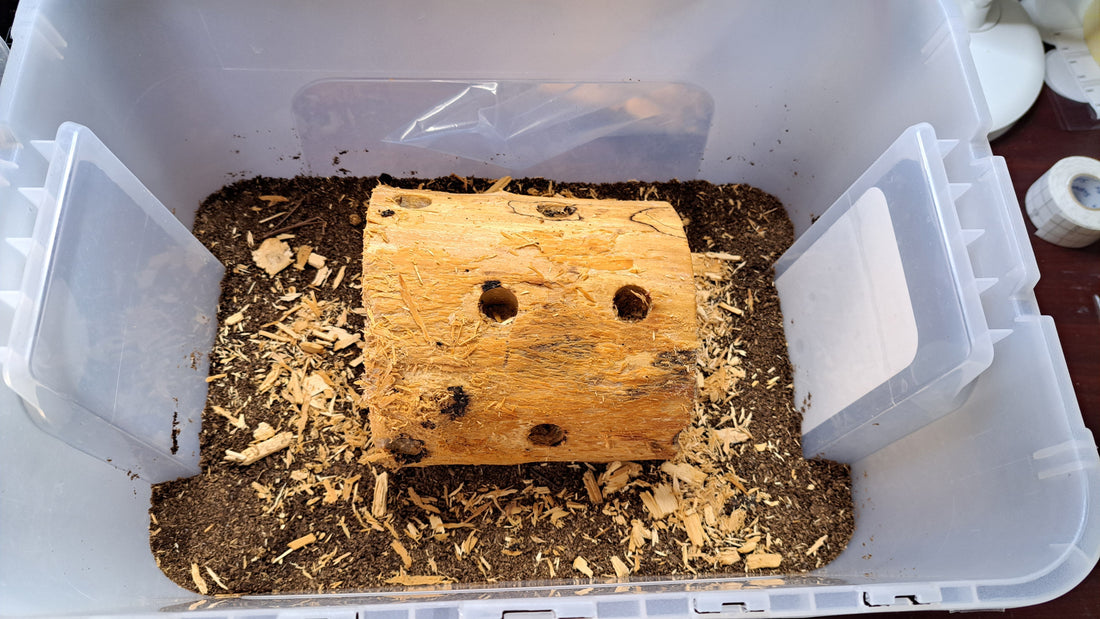🚩 How to Induce Stag Beetles to Lay Eggs.
Getting stag beetles to lay eggs isn't just about tossing them into a box and hoping for the best.
The setup really matters, and it can vary depending on the species,
so doing some research beforehand is always a good idea.
Here’s how I usually set up for species that require breeding logs:
✅ Step-by-Step Breeding Log Setup

1. Pack the substrate firmly at the bottom.
Fill your container with substrate and press it down tightly to a depth of about 1–2 inches.
Why? Some species may lay eggs in the compacted substrate, and any L1 larvae that fall from the log will have something to feed on right away.

2. Soak the breeding logs.
Here’s where most people make mistakes.
The soaking time really depends on how dry or thick the logs are,
there’s no exact number.
But remember this:
Too dry? Usually no problem.
Too wet? Big problem. The logs will rot inside the case, ruining egg and larva survival rates.
I usually soak logs in water for just 5–10 minutes, that’s enough.
3. Dry the logs.
Let the logs air dry after soaking.
When you press your fingernail into the cut surface, it should leave a faint mark.
That’s your signal that it’s good to go.

4. Remove the bark and clean the surface.
Most breeding logs are recycled mushroom logs, so they’ll have little holes.
Clean those thoroughly, any leftover mushroom mycelium can spread and harm eggs and tiny L1 larvae.
5. Place the logs on the compacted substrate.



6. Pack substrate tightly around the logs.
This helps keep the logs stable and prevents them from shifting.
Also, the substrate helps regulate moisture by slowly transferring it to the log
7. Add beetle jelly and anti-flip support
Place 3 or more jellies for your female to keep her well-fed during egg-laying.
Even if she doesn’t eat, replace jellies weekly to avoid mold.
Also, adding mesh or bark helps prevent her from flipping over.

8. Add the female.
The ideal temperature range for egg-laying is usually 73–77°F (23–25°C).
🚩 Since there is a possibility of unfertilized eggs, it is appropriate to check whether eggs have been laid every 1-2 months.
However, once the confirmation process has been completed, the settings must be set again from the beginning.
----------
🔎 Sample Setups
Personally, I like to cover about 90% of the logs with substrate.
This helps retain moisture and prevents mold growth.




Adjust Based on Species
Some species prefer:
📌 Fully buried logs
📌 Half-buried logs
📌 Exposed surface logs
📌 Cracked or broken logs
